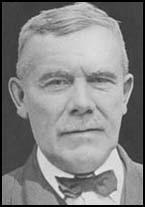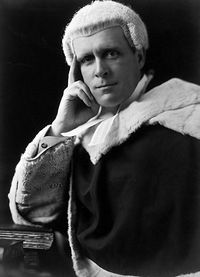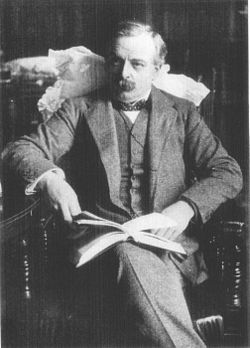by Pete Goddard and Atul Hatwal
At the start of 1919 Labour sat in an unfamiliar position. Its MPs lounged comfortably on the front row of green leather benches directly opposite the government as the official opposition.
Unfortunately, the reason they were so comfortable was that there was lots of elbow room on the opposition benches. On the other side, the government with its massive majority of over 200 members were crammed in tighter than a ballerina’s buttocks
Labour had made it to become the second party of British politics, but only just. The previous December’s election had seen the Liberals implode and Labour, whilst slightly growing in numbers, robbed of almost all of its leading figures at the time when it needed them most.
Only the capable JR Clynes and tough railway union leader Jimmy Thomas had hung onto their seats. Their colleagues were predominantly older union men from the right of the party. This included the new leader, William Adamson, a man described by Roy Hattersley as “a dour and little-remembered Scottish miner.” A bit like Jimmy Krankee then.
In post-war Britain, the situation was volatile. Industrial unrest was increasing and on the 31st January there was a 48 hour strike in Glasgow over working hours. This culminated in 100,000 angry Glaswegians protesting in St George’s square, which terrified the government. Fair enough, a mass of angry Glaswegians would terrify anyone.
A bit twitchy after the Russian revolution, the government immediately reached for the folder marked ‘huge overreaction’. They mobilised 12,000 troops and, the ideal accessory for calming tense situations, six tanks.
The troops and tanks arrived and, several baton charges later, the day was christened Bloody Friday – which is really saying something when you consider the reputation of a regular Friday night in Glasgow.
In this climate of industrial discontent, on February 11th 1919 Adamson rose from his seat to become the first Labour politician to ever speak at a despatch box as leader of the opposition.
His inaugural effort is remembered to this day by literally no-one. In it, though, he did make reference to the plight of those working in his former profession – the miners.
What happened to the mining industry would set the tone for British industry post-war. After increased state control during the war, many believed the case had been made for nationalisation.
The miners certainly did. Their union put forward demands for nationalisation with joint control by owners and miners.
Oh, and whilst they were on the subject, a 30 per cent wage increase and a cut in the working day from eight hours to six would be nice too.
It seemed like a lot. But then, the owners’ profits had quadrupled during the war years yet the miners found their wage packets curiously un-quadrupled.
Unfortunately, Lloyd George was not interested in nationalisation. This was hardly surprising given his mostly-Tory government was memorably described by Stanley Baldwin as “Hard-faced men who looked like they had done very well out of the war”. And that’s from someone on their side.
With no sign of agreement, a strike loomed – potentially disastrous for the nation’s coal-hungry industries that were just beginning to recover after the war.
In a tight spot, Lloyd George reached for that old faithful of prime ministers needing to buy time. In mid-February, he announced a royal commission of inquiry. And for this particularly tricky issue, he went for the premium variety: judge-led.
Justice Sankey was joined by 12 commission members representing owners, miners, industrial experts and Labour. They got to work on March 3rd 1919 and within 17 days produced interim findings.
These gave Lloyd George a chance to stall the miners with promised concessions on working conditions. The interim report offered a wage increase of 20 per cent and working hours cut from eight to seven per day.
What’s that? You want a view on nationalisation? Nothing to see here. Move along please.
The government made all the right noises. Andrew Bonar Law, leader of the house, stated,
“I say now on behalf of the Government that we are prepared to adopt the Report in the spirit as well as in the letter.”

Andrew Bonar Law finding the observation that his middle name was pronounced ‘Boner’ as hilarious as the first time he heard it.
How could a government possibly shirk such an unequivocal promise?
A major victory for William Adamson and the Labour movement seemed in prospect so the miners’ union postponed strike action.
While the commission deliberated further the spectre of a revolution-minded working class armed with pitchforks, flaming torches and dog-eared copies of Das Kapital receded. Strikes were becoming increasingly rare and a rapidly accelerating economy was raising employment across Britain.
Then, on June 23, the Sankey commission gave its final report.
Or rather reports.
Rather than resulting in a consensus, having a commission with representatives from all sides of the industry had had exactly the opposite effect.
Failing to agree on any single solution, the committee released no less than four different reports. The chairman, the Labour reps, the owners, and a technical engineer named Sir Arthur Duckham all released their own conclusions. The result was a political report that read like a ‘choose your own adventure’ book with a recommendation to suit every outlook.
That said, the majority of commissioners did back some form of nationalisation. The government, though, still wasn’t keen. So they said nothing. July passed and still no word on how the government would follow through on Bonar Law’s warm words.
Finally, on August 18th Lloyd George broke the silence. His opening gambit said it all,
“Many…seem to assume that when a Government appoints a Commission, it is in honour bound to accept all its recommendations… I never heard of that doctrine in the whole history of the House of Commons.”
Apparently he didn’t believe a government was honour-bound to accept its own promises either. That or he’d never received his copy of the Hansard recording Bonar Law’s commitment to implement Sankey.
The government used the split reports to do as little as possible. A new department of Mines was to be set-up, as were joint committees of owners and men, and a fund to improve social conditions in mining districts. It was all very nice, but it wasn’t anything like nationalisation. Working hours didn’t get a mention, and not a penny was put in the miners’ pockets.
In response Labour’s brought all its power to bear. Which was none. As a tiny minority in the shadow of a massive Tory majority, there was very little Labour could do.
It was an impotence shared by the miners union, who on this occasion knew better than to call a strike in mid-summer when stockpiles were high and demand for coal at its lowest.
After all the hope for a new model of nationalised industry, Lloyd George and his conservative allies made it clear that they had no intention of changing anything.
And there was very little the Labour party, national opposition or not, could do about it.
Pete and Atul are not historians
Tags: Andrew Bonar Law, Atul Hatwal, Labour history uncut, Lloyd George, Pete Goddard, Sankey Commission, William Adamson












Not pedantic, important: it is “George Square” not “St George’s Square” in Glasgow. Always was.
Apologies Peter. Will correct. Thanks for pointing that out
A ballerina’s buttocks? Really?